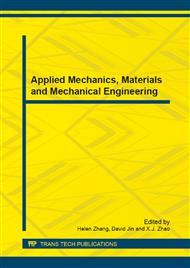p.36
p.40
p.47
p.51
p.55
p.59
p.64
p.68
p.72
Experimental Design and Mechanics Study on Brain Injury Tolerance under Sagittal Angular Acceleration Based on Shearing Strain Equivalent Coupling Method
Abstract:
s: Brain impact injury is the leading cause of death in traffic accidents. In this paper, a brain multi-functional rotary impacting platform will first be set up. After this, the living animal brain sagittally rotary impacts will be executed and the injury tolerance will be achieved. Then, the sagittal physical models of animal and human brains will be produced and the four-point markers will be placed widely on the models sagittal sections. In succession, the high-speed camera and the three-dimension infrared motion analysis meter will be used to record the rotary impacting process, the exterior angular acceleration course and the shearing strain data of interior four-point markers. Thus, with the exterior angular acceleration course, the living animals experiments and the experiments based on the animal physical brain model can be coupled equivalently. In the same way, through the maximum shearing strain data of interior four-point markers, the experiments based on the animal physical brain model can be equivalently coupled with the experiments based on the human physical brain model. Finally, according to the comparability in pathology and physiology between animal and human brain tissue, the injury tolerance of human brain under its sagittally rotary impacts can expect to be obtained through the mechanics study.
Info:
Periodical:
Pages:
55-58
Citation:
Online since:
August 2013
Authors:
Keywords:
Price:
Сopyright:
© 2013 Trans Tech Publications Ltd. All Rights Reserved
Share:
Citation:


